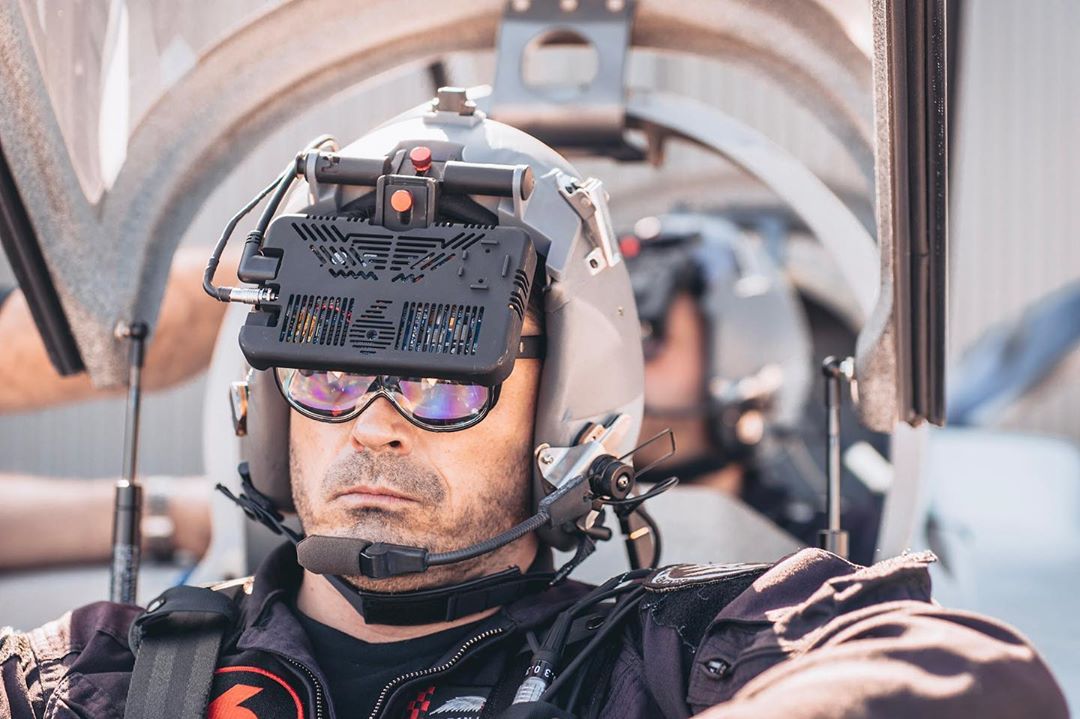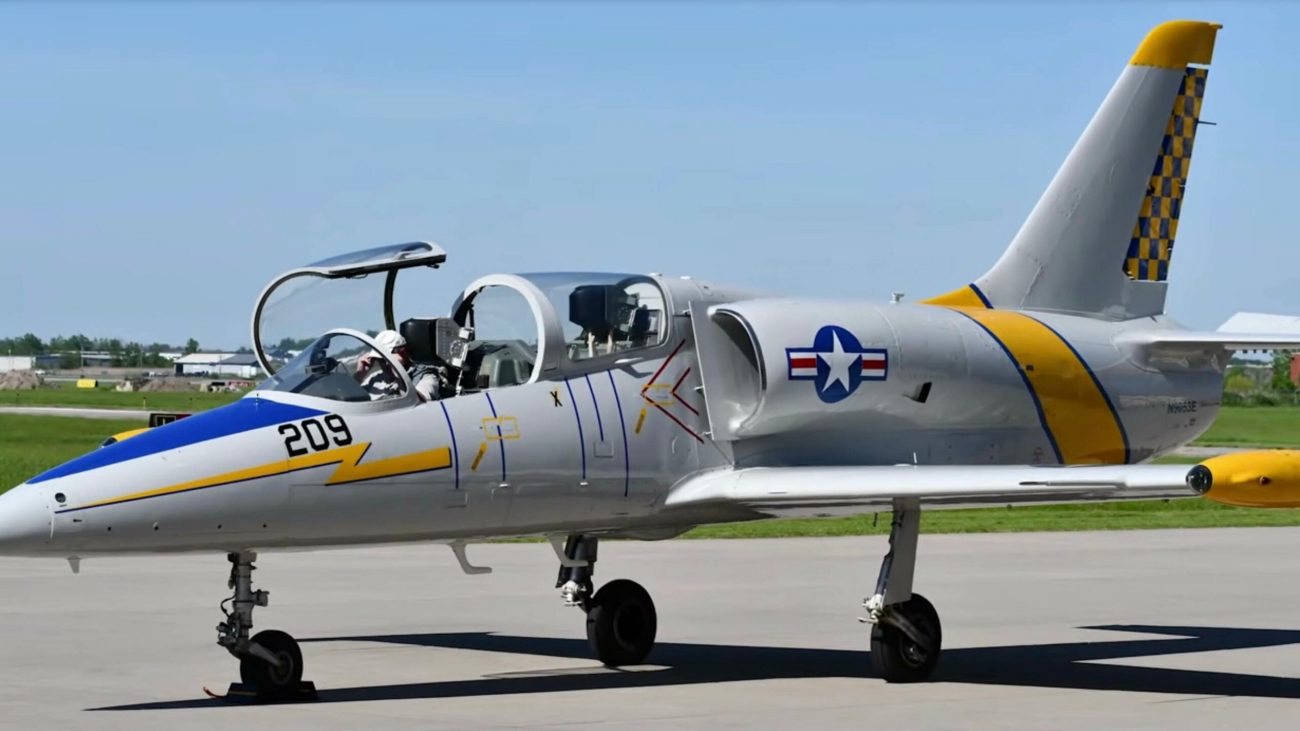Integrating artificial intelligence (AI) into military aircraft has multiple advantages ranging from lesser manpower expenditure to usefulness in regions with a lower number of troops to greater efficiency on the battlefield.
US Clears $14B Sale Of F-15 Air Superiority Fighters For Indonesia A Day After Jakarta Signs Mega Deal For Rafale Jets
The US Defense Advanced Research Projects Agency (DARPA) is focusing on leveraging the power of AI for the American military.
One of the AI technologies that DARPA is funding has been developed by software company Heron Systems (part of Shield AI) and is being tested on the L-39 Albatros platform. It could revolutionize the way fighter aircraft function.
Dr. Peter Layton, a Visiting Fellow at the Griffith Asia Institute, Griffith University, and an Associate Fellow at the Royal United Services Institute, wrote that a functional, customized AI-enabled short-range, dogfighting Unmanned Aerial Vehicle (UAV) could be more compact, have lesser weight, and be cheaper compared to a crewed aircraft.
The UAV could possibly be allocated to engage, close, and begin dogfighting an adversary aircraft. At one level, the AI-controlled aircraft can distract a crewed enemy plane. On the other hand, even if the adversary crewed aircraft maneuvers, the UAVs can ensure they at least have a higher rate of fuel usage, thus forcing them to return for refueling soon.
100 Times Faster, China Claims New ‘World Record’ In Data Streaming Using Next-Gen Wireless Communication
There are other prospects as well. For instance, for AI working with humans either in-the-loop or on-the-loop for better decision-making, there is a chance that an AI-enabled aircraft could operate in the combat air patrol (CAP) and ground alert interceptor (GAI) roles
Testifying at a Senate Armed Services Committee hearing, Lt. Gen. Michael E. Kurilla, commander of the XVIII Airborne Corps, explained how AI can help improve targeting.
“We can take large pieces of terrain and rapidly identify hundreds of targets, prioritize them based on a high priority target list that determines which ones we should strike with the resources that we have. And then that goes back into our firing solutions.
That happens in seconds versus what would take hours normally, or sometimes even days to be able to develop these targets. And it’s doing it in real-time at the edge in our command posts and not being tied just back into a garrison computing environment,” he said.

Kurilla believes that AI would offer crucial capabilities for counterterrorism. The general had also highlighted that the use of autonomy and artificial intelligence will play a big role in military operations regions like the Middle East, where US forces do not have a sizeable presence anymore.
DARPA’s Efforts
DARPA has several ongoing programs that deal with AI. One of them is the Air Combat Evolution (ACE) program. Its aim is to increase trust in combat autonomy by taking human-machine collaborative dogfighting as a challenge.
Battling A ‘Numerically Superior’ China, Why Indian Army Desperately Needs ‘Exorbitantly Priced’ US Military Weapons
ACE will employ currently available AI technologies to the dogfight problem in experiments. Simultaneously, the program will implement methods to measure, calibrate, increase, and predict human trust in combat autonomy performance.
It is clear that a single human pilot can increase lethality by skillfully orchestrating several autonomous unmanned platforms from within a manned aircraft. The program has created a hierarchical framework for AI autonomy. Higher-level cognitive functions may be performed by a human, while lower-level functions are left to the autonomous system.
Phase 1 of the ACE program included simulated 2-vs-1 engagements that put AI-controlled F-16s against an opponent. Phase 1 had a notional air-to-air missile, as well as the F-16’s gun. Their presence expanded the scenarios into the beyond-visual-range (BVR) battlespace for this phase.
Phase 2 was set to expand the AI-driven dogfighting scenarios to involve live subscale aircraft to check how those AI algorithms would pan out in live-air combat scenarios.
Lastly, under Phase 3, the AI technology was slated to be inserted in an L-39 jet trainer as an onboard AI “pilot.”
In August 2020, it was reported that a simulated F-16 Viper fighter jet with an AI-driven “pilot” went undefeated in five rounds of mock air combat against a top Air Force fighter pilot. This AI was built by Heron Systems and its algorithms were not only able to go head-to-head with an actual fighter pilot, but also stay undefeated for all rounds.
Within the simulation, the AI pilot was able to consistently shoot shots precisely in very short timeframes. It also pushed the airframe’s gravity tolerance to its maximum potential and remained undeterred by the huge pressure exerted by violent maneuvers.

Last year, Heron Systems told The War Zone that it would integrate its systems into an L-39 Albatros jet trainer “in the near future” as part of the DARPA’s ACE program.
It was also reported that DARPA had awarded Calspan Corporation a $14.1 million, four-year contract to modify up to four Aero Vodochody L-39 Albatros jet trainers for AI-controlled flight experiments. Flight tests and demonstrations with the adapted L-39s were slated to be performed from Calspan’s flight research facility at the Niagara Falls international airport.
L-39 Trainers Put To Test
In January this year, reports said that the L-39 was taken up above Lake Ontario 20 times. Every sortie gave the engineers and computer scientists the information required to construct a model of its flight dynamics under different conditions.
“Like self-driving cars, autonomous planes use sensors to identify discrepancies between the outside world and the information encoded in their maps. But a dogfighting algorithm will have to take into account both the environment and the aircraft.

A plane flies differently at varying altitudes and angles, on hot days versus cold ones, or if it’s carrying an extra fuel tank or missiles,” the report said.
If things stay on track, the ACE program will have four AI-enabled L-39s will participate in a live dogfight above Lake Ontario in 2024. To make this a reality, DARPA has already enlisted three dozen academic research centers and private companies.
They are all working on either of two problem areas: how to get the plane to fly and fight autonomously, and how to get pilots to trust the AI an ample amount to be able to use it.
- Contact the author at: shreyya.mundhra@gmail.com
- Follow EurAsian Times on Google News




